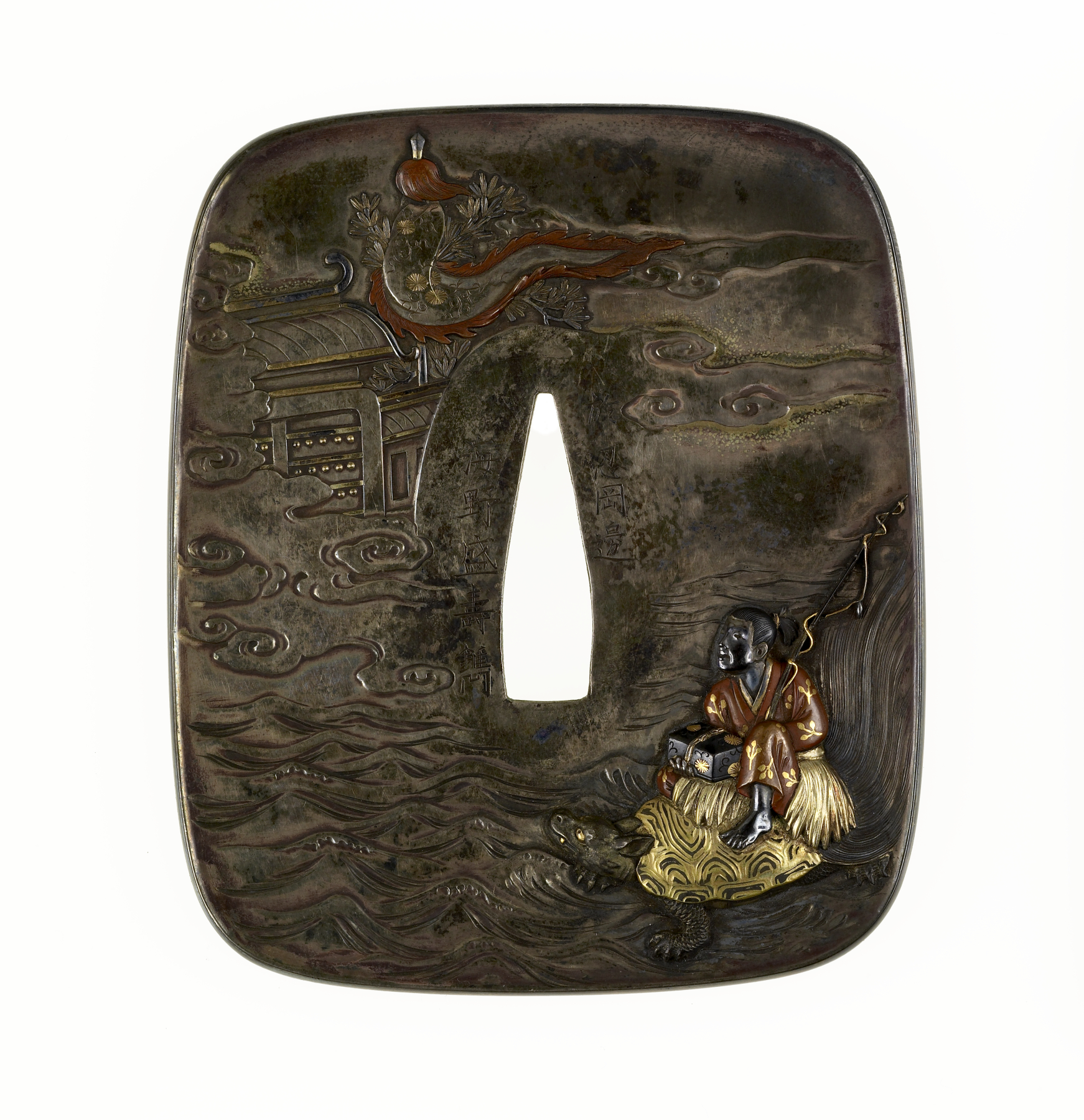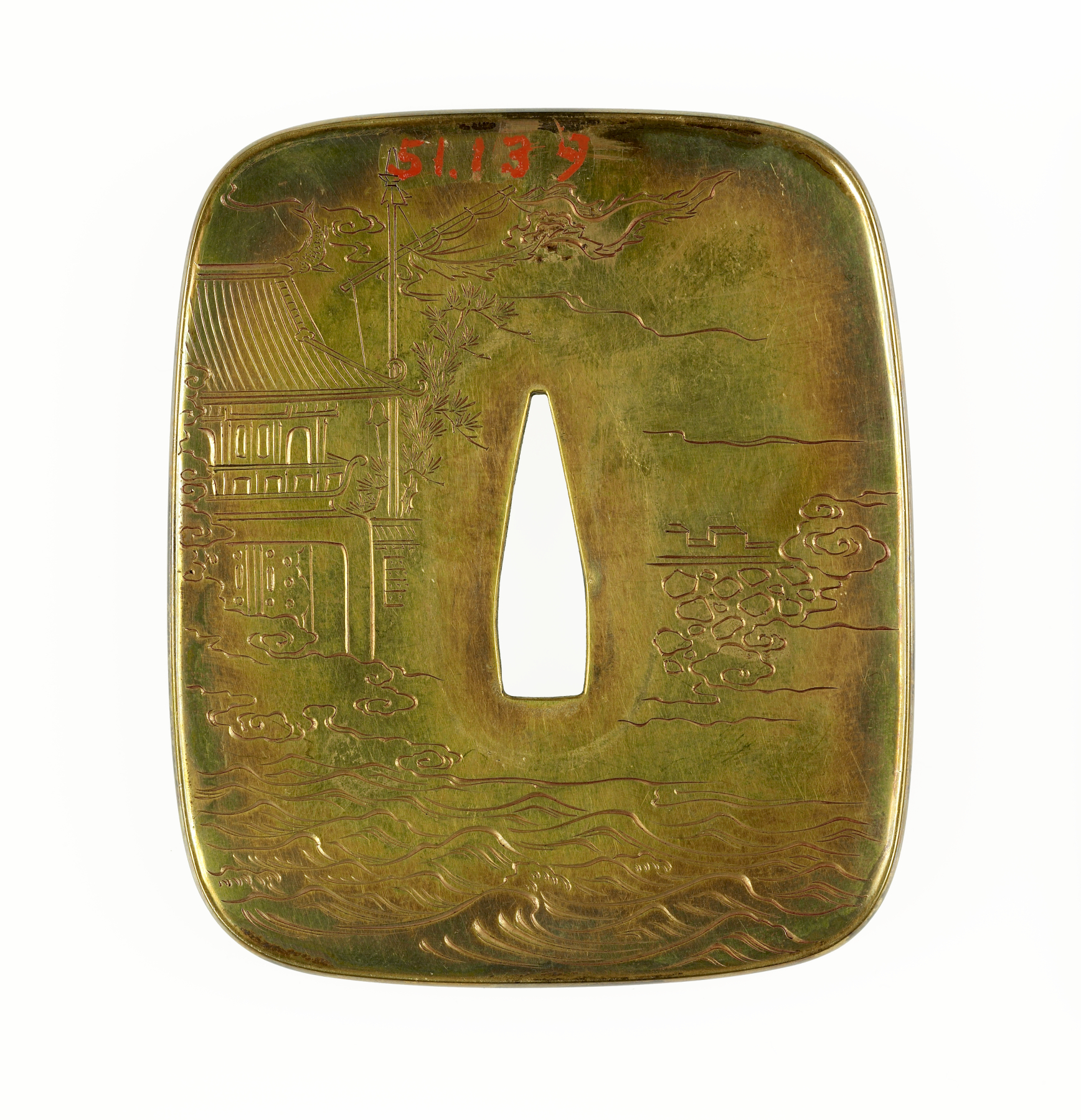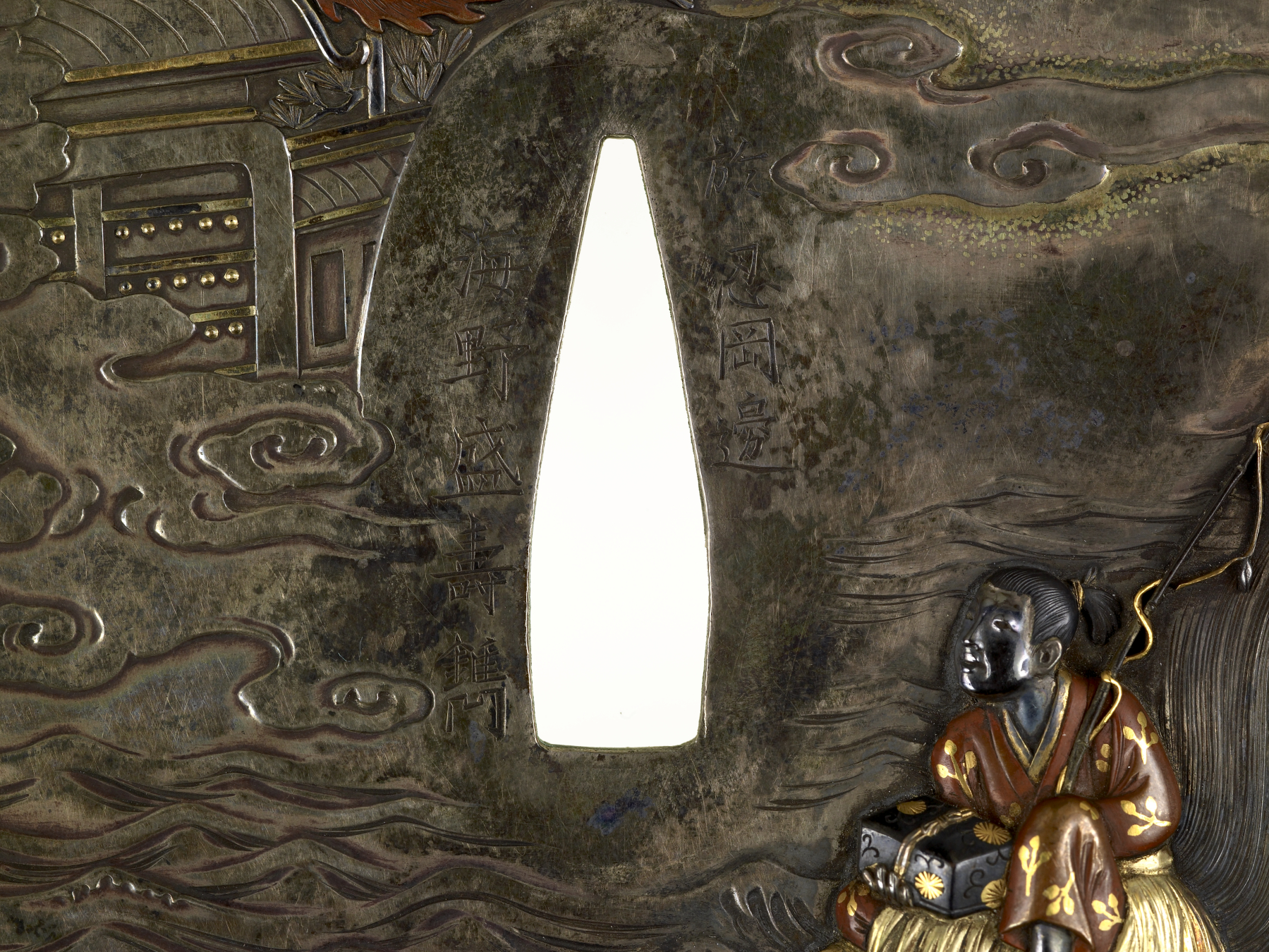Tsuba with Urashima Taro Leaving the Palace of the Dragon King
(Japanese Military Armor)
This tsuba depicts a scene from the story of Urashima. Urashima was a fisherman who accidentally caught a tortoise in his net. He freed the tortoise and threw it back in the sea. Later, a beautiful woman appeared to him on the water and took him to the underwater palace of her father, the Dragon King. She was tortoise he had saved. They live happily in the palace for three years when Urashima decided he wanted to visit his hometown. His wife gave him a box she told him not to open if he wanted to return to the underwater palace. When Urashima arrived at his old home, he could not find his parents or his house. What had seemed like three years to him had actually been three hundred years. When he opened the box, he instantly aged those three hundred years and died. This tsuba shows Urashima leaving the Dragon Palace with the box on the back of a tortoise. The palace is also depicted on the reverse.
Inscription
Provenance
Provenance (from the French provenir, 'to come from/forth') is the chronology of the ownership, custody, or location of a historical object. Learn more about provenance at the Walters.
Henry Walters, Baltimore [date and mode of acquisition unknown]; Walters Art Museum, 1931, by bequest.
Geographies
Japan, Tokyo (Place of Origin)
Measurements
3 1/8 x 2 5/8 x 3/16 in. (7.96 x 6.7 x 0.43 cm)
Credit Line
Acquired by Henry Walters
Location in Museum
Not on view
Accession Number
In libraries, galleries, museums, and archives, an accession number is a unique identifier assigned to each object in the collection.
In libraries, galleries, museums, and archives, an accession number is a unique identifier assigned to each object in the collection.
51.139






